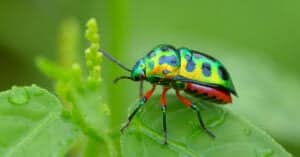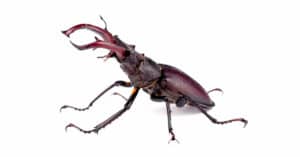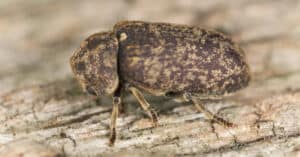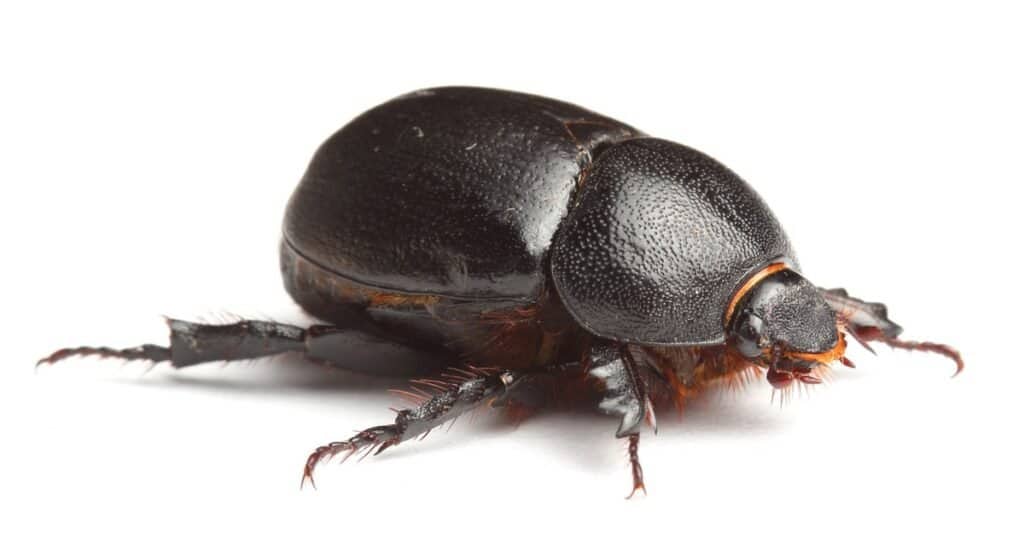
The Egyptian beetle, or Scarabaeus sacer, is a
dung beetle
that lives in a variety of environments, from the desert to the rain forest in all continents except Antarctica.
©Vitalii Hulai/Shutterstock.com
The Egyptian beetle, or Scarabaeus sacer, is a dung beetle that lives in a variety of environments, from the desert to the rain forest on all continents except Antarctica. Dung beetles feed on feces to survive and raise their young. Dung beetles evolved sixty-five million years ago, as dinosaurs died out and mammals grew larger. There are around eight thousand dung beetle species worldwide, mostly in the tropics, feeding on terrestrial vertebrate dung.
For the Egyptians, this kind of dung beetle is also known as sacred scarabaeus or sacred scarab beetle. Are you curious as to how the Egyptians came to revere this dung beetle? Keep reading to find out ten facts about the Egyptian scarab that might surprise you!

10. The Egyptian Beetle God

Khepri was considered an “insect” god and was depicted with a dung beetle for a head in ancient drawings.
©iStock.com/Zadvinskii
The scarab was a symbol of the sun deity Ra and was one of the most popular amulets in ancient Egypt. Khepri was an Egyptian God who represented the rising or early sun in ancient Egyptian mythology. Khepri and another solar deity called Atum were often viewed as aspects or manifestations of Ra and have frequently represented the Egyptian beetle.
Khepri was considered an “insect” god and was depicted with a dung beetle for a head in ancient drawings. The Egyptians connected the sun’s movement with the dung balls pushed by the Egyptian beetle and the scarab’s antennae on its head resembled the solar disc flanked by horns worn by numerous deities.
9. Sacred Scarab Symbolisms
The Egyptian beetle is a good luck beetle that is known to symbolize good fortune, hope, restoration of life, and regeneration. It was also a symbol of immortality, resurrection, metamorphosis, and protection in the ancient Egyptian religion.
The sacred insects’ dung balls were fundamental to the Egyptians’ view of the circle of life. The females’ excrement served as a metaphor for rebirth because of the way they ate dung, deposited their eggs in it, and fed their young from it. Throughout the ages, this exceptional bug has been carved or molded into valuable accessories and amulets.
8. These Beetles Have Roles
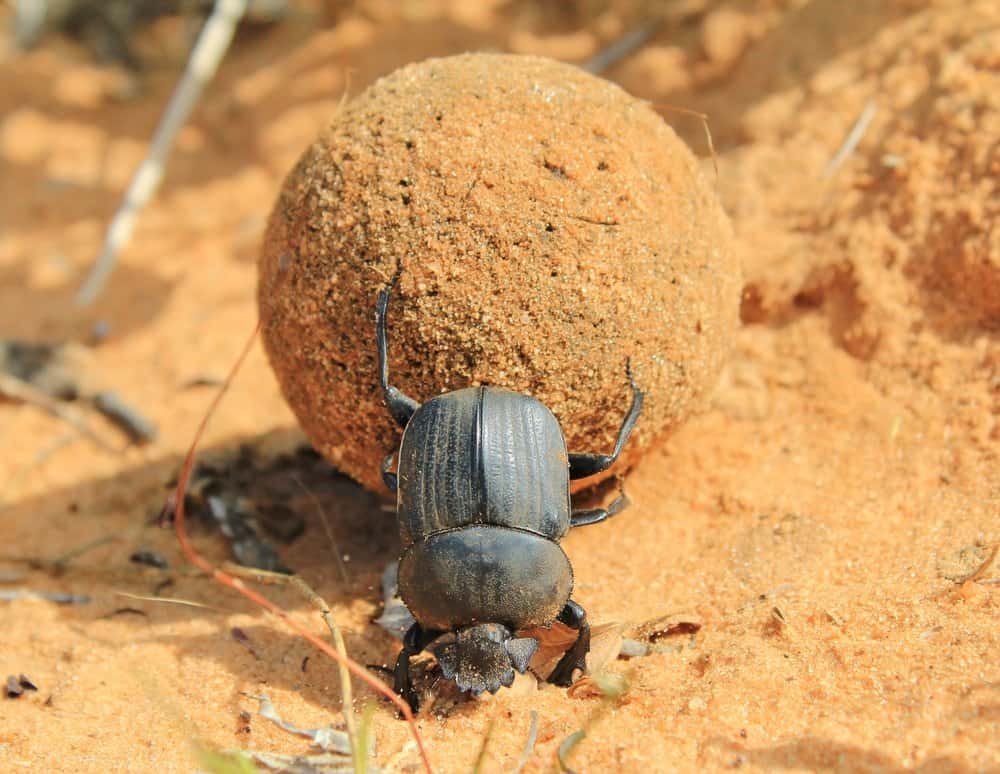
For feeding or reproduction, dung beetles known as rollers make spherical balls out of excrement.
©Stacey Ann Alberts/Shutterstock.com
Egyptian dung beetles eat feces and have a pattern for doing so. For feeding or reproduction, dung beetles known as rollers make spherical balls out of excrement. Tunnelers take these excrement balls and simply bury them wherever they come across them. Inhabitants do not roll or burrow; they just dwell in dung. This is usual for larvae as they begin to develop.
7. Egyptian Beetles are Super Strong
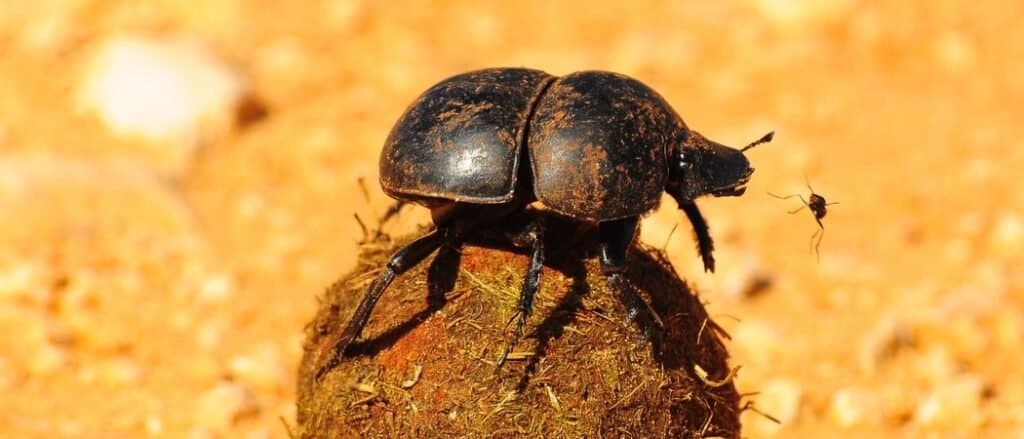
Egyptian beetles can roll up to ten times their own weight.
©Michael Potter11/Shutterstock.com
Egyptian beetles can roll up to ten times their own weight. Certain species of dung beetles can excavate up to 250 times their own weight in dung in a single night. Male dung beetles can pull 1,141 times their own weight, which is the equivalent of an ordinary man lifting two 18-wheeler trucks! This makes it one of the strongest animals in the world, relative to its size.
6. An Opportunistic Beetle
To discover manure, Egyptian dung beetles employ an advanced sense of smell. It is common for these beetles to sniff out an animal and ride it as they wait for it to defecate. Dung beetles are also extremely opportunistic and employ a finder keepers’ mentality with dung. These beetles must move quickly away from a dung pile once they have rolled their ball lest it is stolen by another beetle who will quickly bury it for themselves.
5. Important Part of Our Ecosystem
Egyptian beetles help tropical forests and agriculture by influencing seed burial and seedling recruitment. They do this by dispersing seeds from animals’ excrement. They increase soil structure and nutrients by digesting and recycling manure. Egyptian scarabs also protect livestock by removing excrement that could harbor pests like flies.
So many countries have introduced them for animal husbandry. In the United States, dung beetles bury so much above-ground animal feces, it saves the cattle sector millions of dollars each year!
4. Egyptian Beetles Will Not Eat Your Flesh!
In the first of three Mummy films, an ancient Egyptian tomb is invaded by hordes of fast-moving and dangerous scarab beetles. A large swarm of Egyptian beetles even eats a character to death! But these carnivorous cravings are quite different from the true nature of this beetle. Dung beetles eat dung, not human flesh. There is no need for scarab beetles to devour flesh or move swiftly in herds as they do not need to for survival.
3. If Looks Could Kill
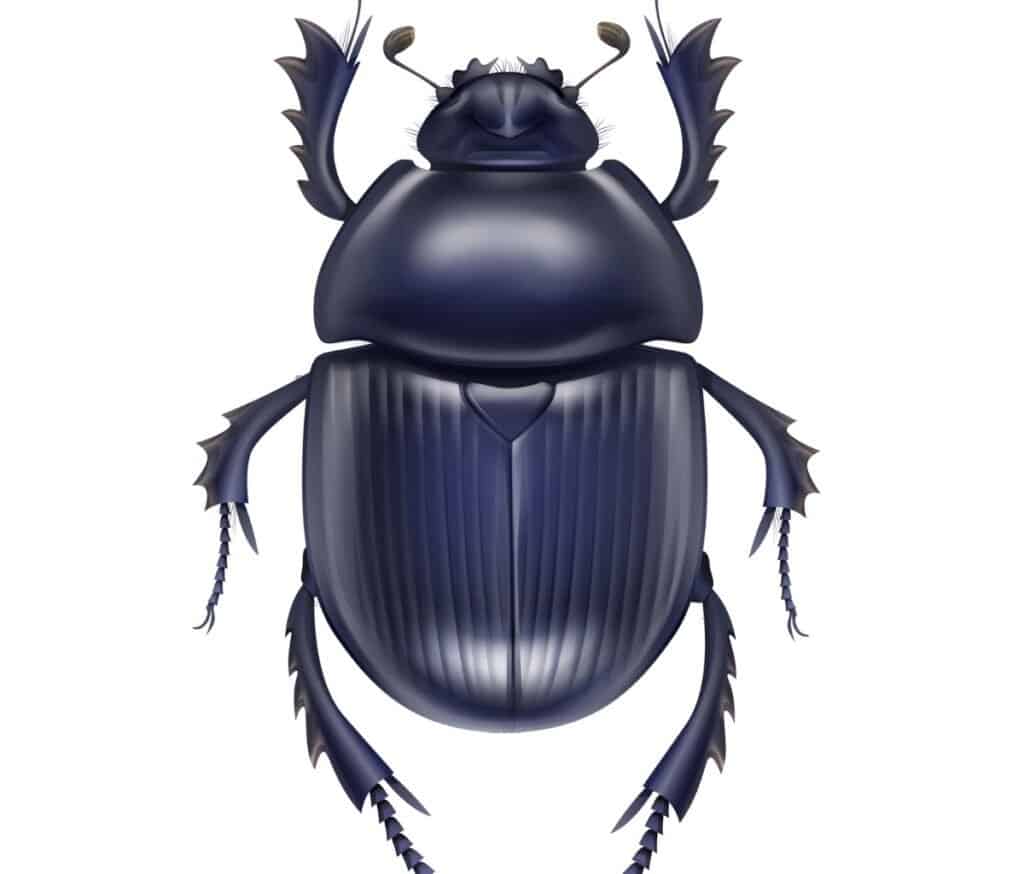
Life-like illustration of the Egyptian beetle
©iStock.com/neyro2008
The Egyptian beetle is all black and shiny, with six ray-like appendages on its body. There is an even distribution of appendages for digging and shaping balls of excrement with precision. Although the Egyptian scarab’s front legs are like the front legs of other beetles, they do not end in any discernible tarsus or claw. Only a sliver of a claw-like feature remains, which could be useful in excavating. The length of this beetle ranges from 25 to 37 mm.
2. Adorned in Jewelry for Centuries
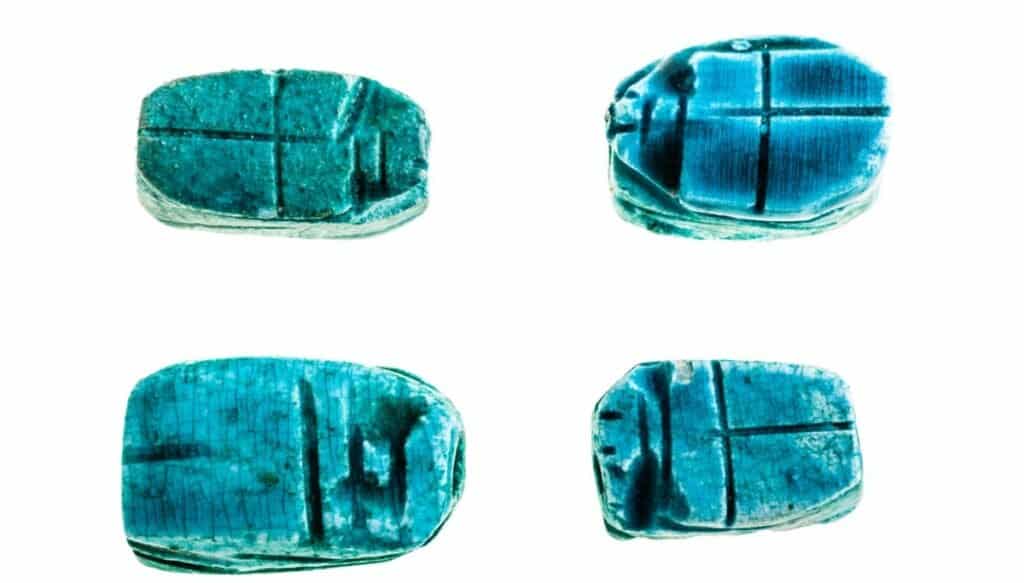
Stone scarab artifacts from Egypt
©iStock.com/porpeller
In the beginning, all scarab pieces were made of stone, but their popularity and significance grew through time, resulting in more variations in material. Scarab artifacts grew more fashionable and were soon made in faience and steatite, with turquoise, amethyst, and other gemstones. They ranged in size and shape.
During the Middle and Late Kingdoms, scarabs began to be used as ornaments for necklaces, tiaras, bracelets, rings, and earrings. They were also used to embellish furniture. It was believed that scarabs gave their wearers mystical abilities and protection throughout the New Kingdom.
1. Egyptian Beetles Are Still Adored To This Day
Although the scarab is no longer a religious icon in Egypt, it is still a cultural one. Tourists in Egypt buy modern scarabs and amulets in marketplaces and souvenir stores. The scarab is also used as a protective and lucky charm in jewelry. Egyptian scarab tattoos are a common emblem of rebirth and regeneration.
This is the end of our look at the Egyptian beetle or sacred scarab as it’s known in Egypt. These dung beetles have been around for millions of years and don’t appear to be going away any time soon, so hopefully, this has given you a new perspective on these fascinating insects!
The photo featured at the top of this post is © Vitalii Hulai/Shutterstock.com
Thank you for reading! Have some feedback for us? Contact the AZ Animals editorial team.



